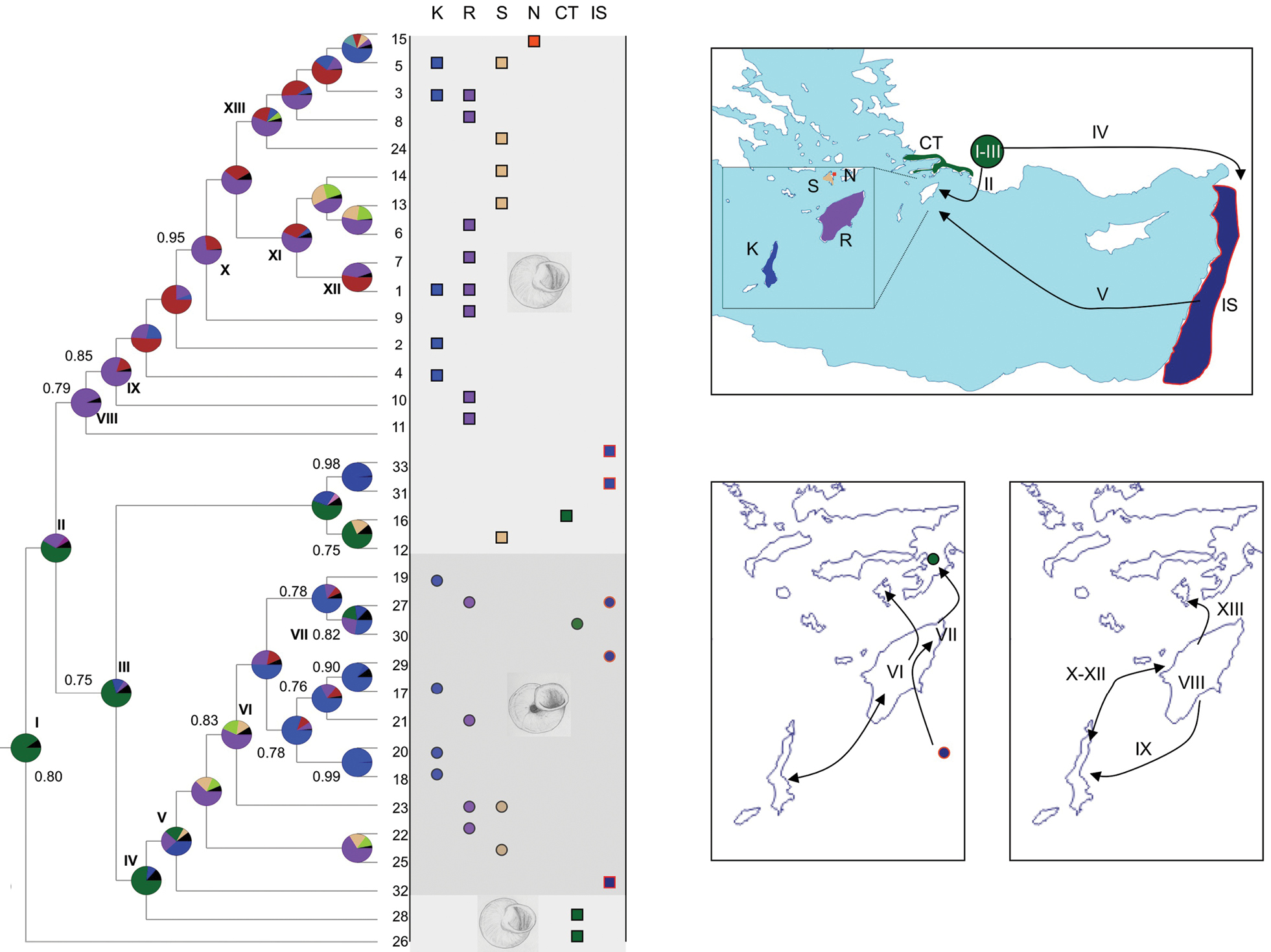
|
||
|
Historical biogeography in Levantina. On the left is the cladogram (as in Fig. 1 but pruned of the outgroup taxa) summarizing the Bayesian dispersal – vicariance analysis. The distribution of each haplotype and the relative shell shape is summarized in the column to the right of the haplotype identifiers (K = Karpathos Is.; R = Rhodes Is.; S = Symi Is.; N = Nimos Is.; CT = Continental Turkey; IS = Israel). Pie charts and numbers next to them indicate marginal probabilities of alternative ancestral ranges; colors identify the different geographic areas considered and match those in Fig. 1. Roman numbers identify events discussed in the text. On the right is the schematic of the proposed biogeographic history of Levantina. Arrows indicate the direction of the dispersal events inferred by the Bayesian dispersal – vicariance analysis and discussed in the text; roman numbers are the same as in the cladogram shown on the left. The bottom left panel details events within the umbilicate clade (circles), the bottom right panel those within the insular non-umbilicate clade (squares). |